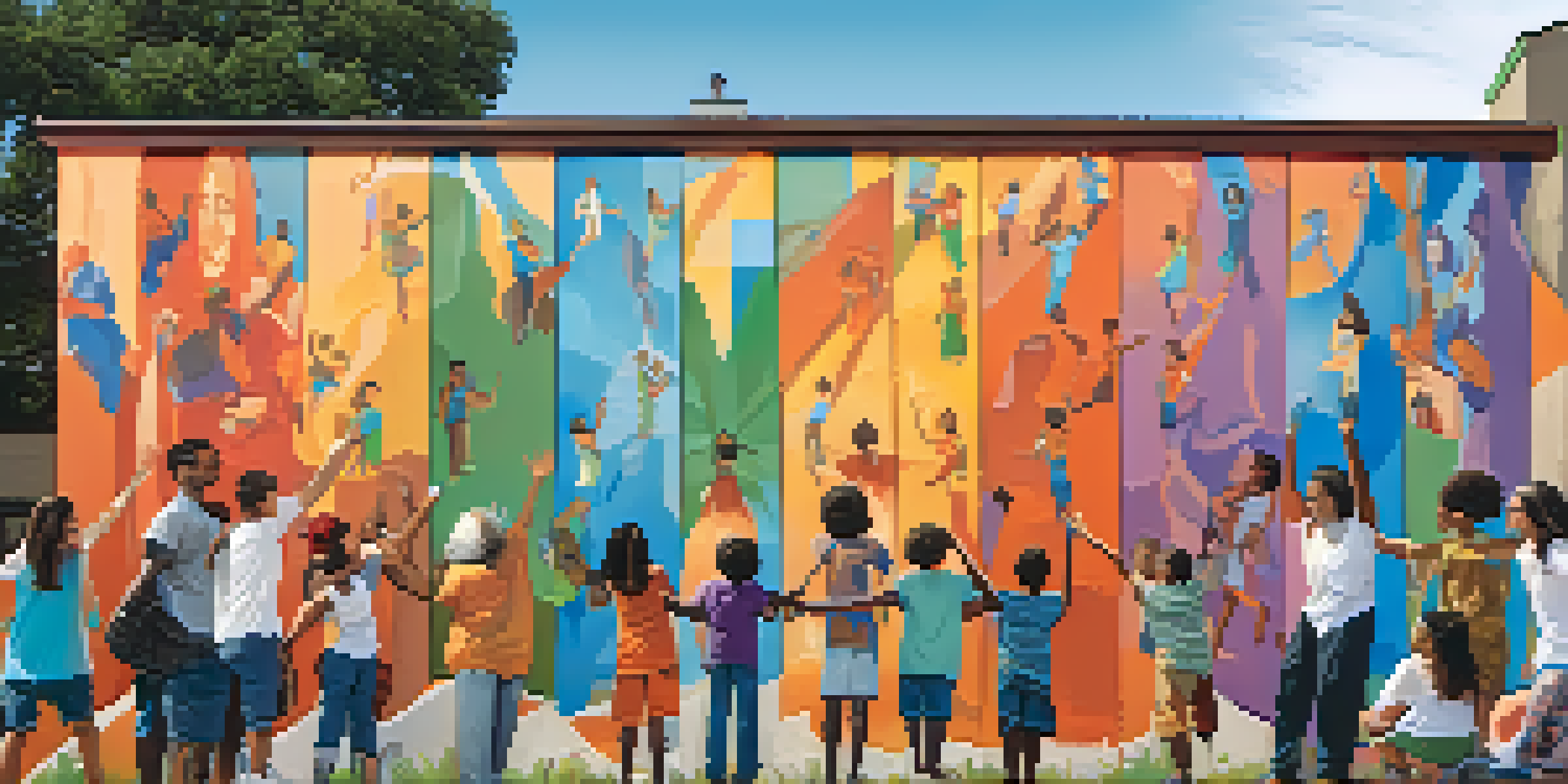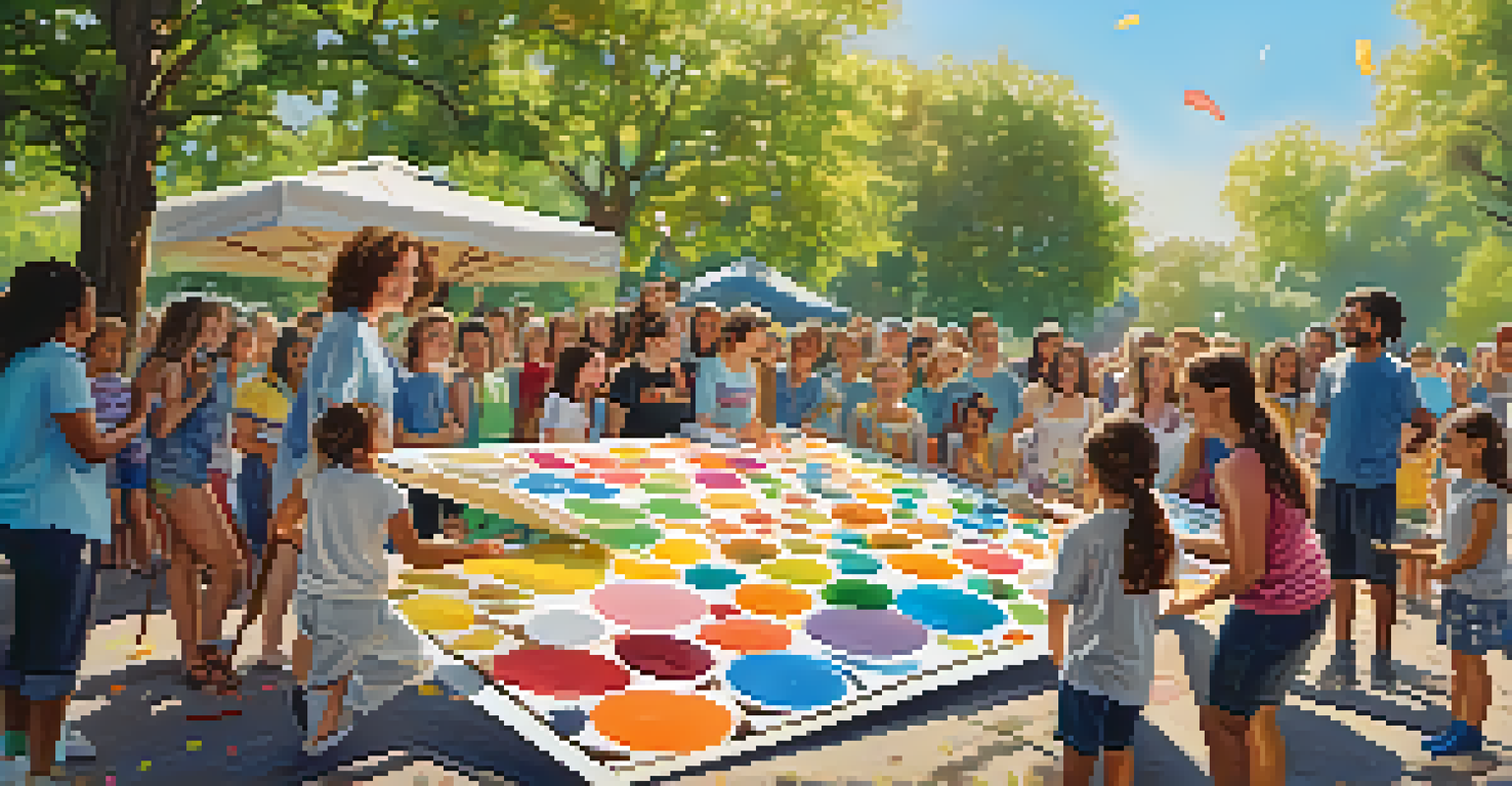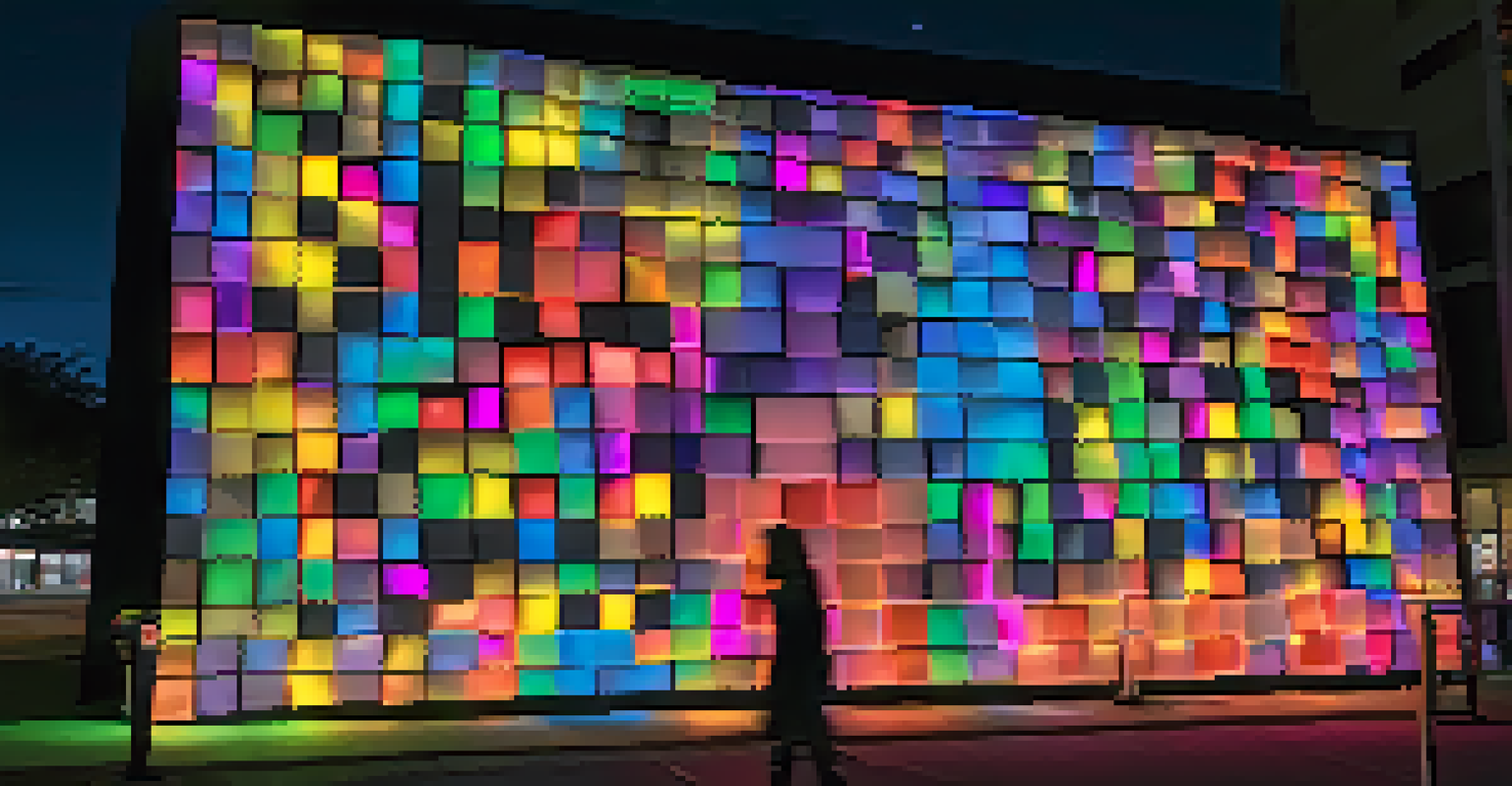Art as a Tool for Change: Collective Projects in Action

The Power of Art in Social Movements
Art has long served as a powerful vehicle for social change, often conveying messages that resonate deeply within communities. From protest songs to graffiti murals, artists have used their craft to highlight injustices and inspire action. By capturing emotions and stories, art can unite people around a common cause, making complex issues more relatable and accessible.
Art is not freedom from discipline, but disciplined freedom.
For example, consider the iconic 'I AM A MAN' signs carried by sanitation workers during the 1968 Memphis strike, which not only illustrated their struggle for rights but also became a symbol of the Civil Rights Movement. Such examples show how art can transcend barriers and foster understanding among diverse groups of people.
This ability to connect on an emotional level is what makes art an invaluable tool in social movements, encouraging individuals to reflect and take action. As we delve into collective art projects, we’ll see how they harness this power to drive meaningful change.
Collective Art Projects: A Collaborative Approach
Collective art projects bring together artists and community members to co-create works that reflect shared experiences and aspirations. This collaboration not only enhances the final artwork but also fosters a sense of ownership and belonging among participants. When people come together to create, they build connections that can lead to stronger community ties.

An example of this is the 'Inside Out Project', launched by artist JR, which invites individuals to share their stories through large-scale portraits. This project has turned ordinary people into powerful symbols of change, showcasing the diversity and resilience of communities around the world. By participating, individuals not only contribute their voices but also inspire others to engage.
Art Unites Communities for Change
Collective art projects foster collaboration among artists and community members, enhancing connections and amplifying shared messages.
Through these collaborative efforts, collective art projects empower participants and amplify their messages, demonstrating how art can serve as a catalyst for social change.
Engaging Communities Through Art
Art has the unique ability to engage communities in ways that traditional methods often cannot. When people participate in creating art, they become active contributors to the narrative, rather than passive observers of societal issues. This engagement fosters dialogue and encourages participants to reflect on their roles within their communities.
The artist's job is to be a witness to his time in history.
In neighborhoods across the globe, mural painting projects invite residents to come together, share stories, and express their hopes and challenges through vibrant visual art. Such initiatives not only beautify public spaces but also ignite conversations about important local issues, from housing rights to environmental sustainability.
By engaging communities through art, these projects create a platform for collective reflection and action, highlighting the power of creativity in driving social transformation.
Art as a Vehicle for Advocacy
Art can serve as a powerful advocacy tool, raising awareness about pressing social issues and influencing public opinion. Through various mediums such as photography, performance, and installations, artists can bring visibility to causes that might otherwise be overlooked. This visibility is crucial for fostering empathy and understanding among broader audiences.
One notable example is the 'AIDS Memorial Quilt', which commemorates the lives lost to the epidemic and advocates for continued support and awareness. Each panel of the quilt tells a personal story, reminding us of the human impact behind statistics and policies. Such projects highlight how art can humanize issues, making them more relatable and urgent.
Art Engages and Advocates
By transforming creative expression into advocacy, art raises awareness and inspires action on pressing social issues.
By transforming art into advocacy, collective projects can mobilize communities to take action, whether through fundraising, volunteering, or simply spreading awareness.
The Role of Digital Platforms in Collective Art
In our increasingly digital world, online platforms have opened new avenues for collective art projects, allowing artists and communities to connect globally. Social media, crowdfunding sites, and digital galleries enable individuals from diverse backgrounds to collaborate and share their work with a broader audience. This connectivity enhances the reach and impact of collective art initiatives.
For instance, the '#BlackLivesMatter' movement has utilized social media to share art that captures the struggles and aspirations of marginalized communities. Artists around the world have created digital artworks, posters, and animations to raise awareness and inspire activism, demonstrating the potential for art to transcend geographical boundaries.
Digital platforms not only amplify voices but also foster solidarity, allowing collective art projects to gain momentum and drive social change on a global scale.
Challenges Faced by Collective Art Projects
While collective art projects are powerful, they often face challenges that can hinder their effectiveness. These challenges include funding limitations, differing artistic visions, and navigating community dynamics. Ensuring that all voices are heard and represented can be a complex task, requiring careful facilitation and open dialogue.
For example, a community mural project might struggle if certain groups feel excluded from the planning process or if conflicting ideas about the artwork’s message arise. Addressing these challenges is essential for fostering an inclusive environment where everyone feels valued and empowered to contribute.
Digital Platforms Expand Reach
Online platforms enable global collaboration on collective art projects, amplifying voices and driving social change across borders.
By recognizing and addressing these obstacles, collective art projects can enhance their impact and create lasting change within communities.
The Future of Art as a Tool for Change
Looking ahead, the potential for art as a tool for change remains vast and exciting. As society continues to evolve, artists and communities will find new ways to collaborate and address pressing issues through creative expression. The intersection of art, technology, and social activism will likely lead to innovative approaches to collective projects that resonate with future generations.
Moreover, as more people recognize the transformative power of art, we can expect to see a surge in grassroots initiatives that prioritize inclusivity and community empowerment. By embracing diversity in artistic expression, collective projects can foster a rich tapestry of voices that challenge the status quo.

Ultimately, the future of art as a tool for change lies in its ability to inspire dialogue, foster connections, and drive action, reminding us that creativity knows no bounds.